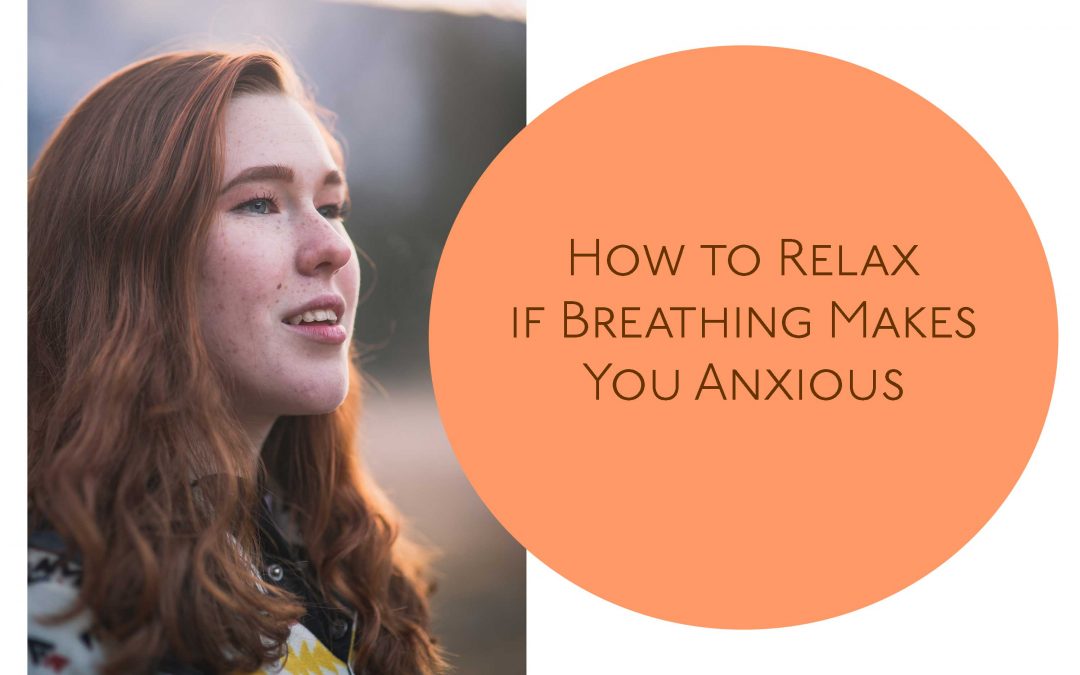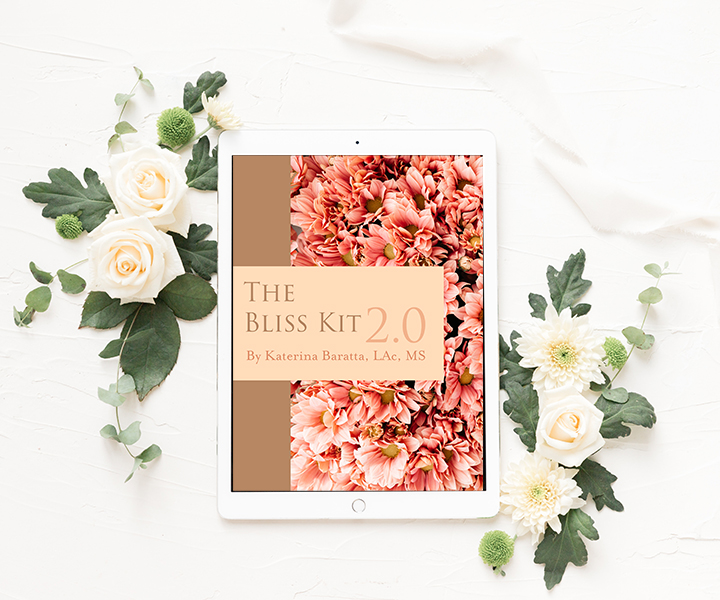Breathing is the first thing experts recommend to help you relax, but what are you supposed to do if breathing makes you anxious?
This article explains how breathing helps most people calm down, why breathing makes some people more anxious, and what to do if breathing makes you anxious.
The room was quiet.
We were 6 women with growing bellies, closing our eyes and leaning on 6 partners who were eager to learn how to support us.
Our hypno-birthing teacher turned on gentle rhythmic music, lowered her voice, and instructed us to focus on our breath.
I could feel everyone around me relax as my heart started to race.
My breath felt shallow, and the baby pushing against my diaphragm didn’t help.
I eventually did manage to relax, because as a yoga instructor and Chinese medicine practitioner I’ve had plenty of experience with breathwork.
But when I asked the teacher what I should do from a hypnotherapy perspective, I watched her face morph into a giant question mark.
Because like most stress-management instructors, she had never been taught that breathing can make you anxious.
All she knew was that breathing practices have been used for thousands of years to calm the mind, relax the nervous system, increase the body’s natural healing capacity and enhance spiritual connection.
Whether it’s seated, walking, yoga or qigong, the foundation of most mindfulness, meditation, and stress-relief practices is to focus on the breath.
And modern scientific studies are showing that breathing practices do, in fact, induce relaxation and reduce anxiety in many people. 1, 2
When you’re stressed, your sympathetic nervous system (SNS) is activated and breathing becomes quick and shallow.
Your parasympathetic nervous system (PNS), on the other hand, is in charge of your rest-and-digest mode, and a large part of this is regulated by the vagus nerve.
Because 80% of the fibers in your vagus nerve run from your body to your brain, some of the best ways to activate your PNS are by relaxing your body. 3
And since breathing is deep and slow in PNS rest-and-digest mode, it makes sense that breathwork helps many people turn down their SNS and activate their PNS so they can relax.
But if you have anxiety-related tension in your body, breathing will make you anxious.
And because many teachers don’t understand this, a lot of anxious people just assume these practices aren’t made for them, or worse, that there’s something wrong with them.
(Anxious people are pros at blaming themselves.)
So why does focusing on breath have exactly the opposite effect on some, making anxiety worse?
It comes down to the nature of stress and anxiety.
Anxiety isn’t just a mind issue, it manifests in the body.
When you’re anxious your body is tense.
Your mind observes the tension and tries to figure out a way to “solve” whatever is causing that tension, leading to anxiety.
And if that tension is concentrated in your belly, chest, or throat, it’s going to restrict your ability to take a deep breath.
So instead of feeling relaxed when you inhale, you become more aware of the tension in your body, your mind tries to find a way to “fix” it, and you end up feeling more stressed and anxious instead of relaxed.
If focusing on your breath makes you anxious, don’t worry.
It’s totally normal, common, and just means there are tension patterns in your body still waiting to be released.
With practice, you can learn to unwind these patterns and eventually breathwork will likely become one of your most-beloved stress-management tools.
In the meantime, there are many other practices you can use to calm anxiety and feel more relaxed.
Seated meditation is all about retraining your focus away from thought into the present moment. And even though breath is one of the most common present-moment focal points people choose, it is far from the only one that works.
If focusing on your breath makes you anxious, choose a different focus point.
Feel the aliveness in your hands or feet.
Repeat a mantra.
Imagine a ball of purple light at your third eye (just above your eyebrows in the middle of your forehead).
If you’re an audio learner, you may want to listen for a consistent sound like a nearby highway, a fan, or a dripping faucet and focus on that.
And if closing your eyes adds to your anxiety, you can even leave your eyes open and keep a soft gaze on a point on the floor, the wall, or the flame of a candle.
Movement meditation practices are also powerful for relieving anxiety.
Qigong, yoga, and walking meditation have all been proven to activate the PNS and calm anxiety. 4, 5, 6, 7, 8, 9
With consistent practice, these methods can help you transform the tension in your body so you can eventually start to use breath as a tool.
But for now remember this:
Even if a teacher guides you to focus on your breath it doesn’t mean you have to follow their direction if it doesn’t work for you.
You can either talk to them and let them know that an alternative focus would serve you better, or you can just ignore their direction and modify your practice in a way that works for you.
Healing looks different for everyone, so don’t worry about doing it “right” or “wrong”.
Wherever you are right now is exactly where you need to be, and the more you embrace where you are on your journey, the richer that journey will be. 10
References:
- https://www.ncbi.nlm.nih.gov/pmc/articles/PMC6137615/
- https://med.stanford.edu/news/all-news/2017/03/study-discovers-how-slow-breathing-induces-tranquility.html
- https://www.ncbi.nlm.nih.gov/pmc/articles/PMC4108556/
- https://www.hindawi.com/journals/ecam/2013/152738/
- https://journals.sagepub.com/doi/abs/10.2466/pr0.103.1.271-274
- https://www.ncbi.nlm.nih.gov/pmc/articles/PMC5843960/
- https://www.liebertpub.com/doi/abs/10.1089/acm.2013.0205
- https://journals.humankinetics.com/view/journals/japa/27/1/article-p18.xml
- https://link.springer.com/article/10.1007/s12671-016-0550-8
- https://pubmed.ncbi.nlm.nih.gov/22803933/





